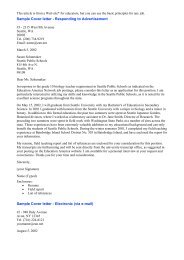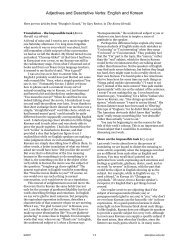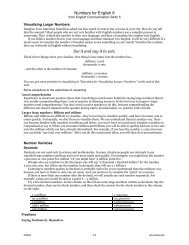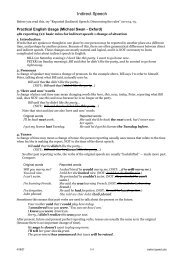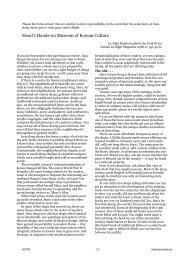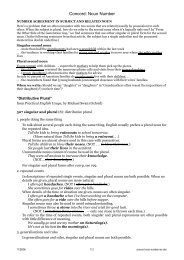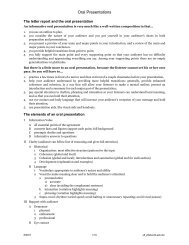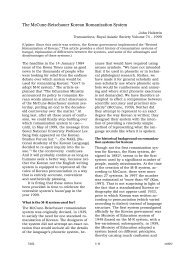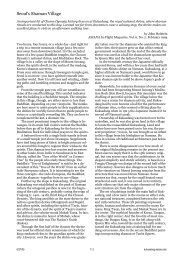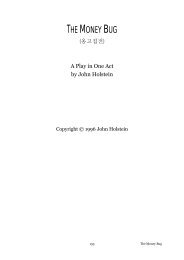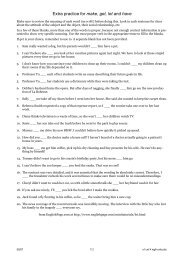You also want an ePaper? Increase the reach of your titles
YUMPU automatically turns print PDFs into web optimized ePapers that Google loves.
Bang Ja goes into a spotlight at far left. He takes up an over-size script<br />
of the play which he uses throughout in his office of “Director.” MUSIC:<br />
On stage, the chorus is humming “Spring Song” and beginning to set the<br />
stage for the next scene.<br />
CURTAIN<br />
Notes by the Play’s Author<br />
Every <strong>Korea</strong>n knows and loves the story of the maiden Chun Hyang. Every schoolboy<br />
can tell you of the villainous Byo’n Satdo, every actress’ dream is someday to<br />
play — or sing or dance — the part of faithful Chun Hyang. Every year, in spring,<br />
two or three or more companies perform the classic, in some form or other, in <strong>Korea</strong>’s<br />
capital city.<br />
Scholars have found more than seventy different versions of the story, the most<br />
authentic dating back almost 300 years. In the twenty most ancient manuscripts,<br />
Professor Kim Dong-uk finds 88 distinct episodes. A desire to share these riches<br />
with non-<strong>Korea</strong>n audiences brought Chun Hyang Song into existence. (Chun Hyang,<br />
in English, means “Fragrance of Spring,” and “Song” is the heroine’s family<br />
name, which provides us, of course, with a convenient pun in the title.)<br />
In Chun Hyang Song we have chosen to use those episodes most popularly<br />
known in <strong>Korea</strong> today, a choice originally made by Yi Hae-jo in his 1912 novel,<br />
which was given an excellent, literal translation by missionary James Scarth Gale in<br />
1918. Our other major source has been a short story of Chun Hyang, translated and<br />
published by an American diplomat, H.N. Allen. Quite a few lines in this adaptation<br />
are taken directly by tradition. From the pansori or folk opera versions of the story<br />
we have taken the farmer’s song, “Nongbu-ga,” as well as the general spirit of our<br />
play, which is a blend of farce and melodrama. The lyrics for the blind man’s song,<br />
“I Remember Well,” are put together from Richard Rutt’s famous translations of<br />
<strong>Korea</strong>n Sijo Poetry, 1 some of the verses dating back as far as the 14th century. The<br />
opening song, “When I Look Once,” is from the late Hyun Jae-myo’ng’s Grand Opera<br />
of Chun Hyang, the words newly translated. We have inevitably given the story a<br />
twist of our own — which always happens in folk drama — but we have the advice<br />
and counsel of a number of scholars and artists to be thankful for, particularly for<br />
the help of Harvard University.<br />
The People in the Play<br />
Chun Hyang Song is a play written primarily for non-<strong>Korea</strong>n audiences since it is<br />
written in a language foreign to <strong>Korea</strong>. Still, a large number of <strong>Korea</strong>ns can understand<br />
it since English is studied by all <strong>Korea</strong>n students beginning in the first year of<br />
A Yang for Every Yin 214



